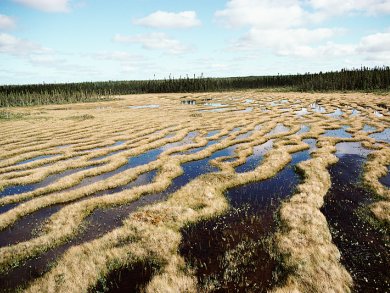Flooded peatland acts as both source and sink for halocarbons. Drainage and converting to pasture can affect atmospheric flux significantly.
A team at the University of California, Berkeley, USA, has used stable isotope tracing to determine how methyl halides and chloroform from drained peatland soils at the Sacramento-San Joaquin Delta of California change under different conditions. They found that CH3Cl and CH3Br fluxes are strongly influenced by soil moisture and temperature. Production rates were linearly correlated with temperature, while sink rates showed a Gaussian relationship. Maximum consumption was seen at soil moisture levels 20–30 % volumetric water content and at 25–35 °C. Chloroform did not correlate with methyl halide fluxes, temperature, or soil moisture, suggesting the site may be a major local source of chloroform.
- Effects of temperature and soil moisture on methyl halide and chloroform fluxes from drained peatland pasture soils
M. A. H. Khan, M. E. Whelan, R. C. Rhew,
J. Environ. Monit. 2012.
DOI: 10.1039/C1EM10639B



